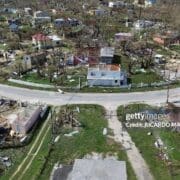Haitian-American Fugees Rapper Pras Michel To Spend 14 Years In Jail
News Americas, NEW YORK, NY, Fri. Nov. 21, 2025: Haitian-American rapper Pras Michel, a founding member of the legendary hip-hop group the Fugees, was sentenced on Nov. 20th to 14 years in federal prison following his 2023 conviction on multiple charges including conspiracy, money laundering, and illegal foreign lobbying.
Michel, whose full name is Prakazrel Samuel Michel, received the sentence from Judge Colleen Kollar-Kotelly in a Washington, D.C. federal courtroom, according to Billboard. After completing his prison term, he will also serve three years of supervised release. Federal prosecutors had pushed for a much longer sentence spanning several decades, while Michel’s attorneys urged the court to impose no more than three years.
Michel is expected to surrender on January 27th, and his legal team plans to appeal both the conviction and the sentence.
“Throughout his career, Pras has broken barriers,” said spokesperson Erica Dumas. “This is not the end of his story. He appreciates the outpouring of support as he approaches the next chapter.”
Michel was first indicted in 2019 on charges of funneling illegal foreign donations into Barack Obama’s 2012 re-election campaign. In 2021, prosecutors expanded the indictment to include additional counts of bank fraud, witness tampering, concealing material facts, violating the Foreign Agents Registration Act (FARA), and acting as an unregistered agent for China.
The case centered on Michel’s ties to Malaysian financier Low Taek Jho, the fugitive at the center of the massive 1MDB corruption scandal involving the theft of $4.5 billion. Prosecutors said Michel helped route money connected to the scheme and participated in a covert lobbying effort aimed at getting the Trump administration to drop investigations into Low and to facilitate the deportation of a Chinese dissident.
After his conviction, Michel sought a retrial, arguing his former attorney used an AI-generated closing argument, which he claimed amounted to ineffective counsel – a request the court ultimately rejected.
Amid the legal turmoil, Michel briefly reunited with Lauryn Hill and Wyclef Jean for Fugees performances in 2023 but later distanced himself from additional reunion plans.
THINGS TO KNOW ABOUT PRAS
1: Pras was born in Brooklyn to Haitian parents. He was raised in Irvington, New Jersey and attended Columbia High School in Maplewood, New Jersey.
2. When he was 15, he met Hill in school. In 1988, Pras introduced Hill to Wyclef Jean. Pras, Jean, and Hill began to rehearse under the guidance of Kool and the Gang’s producer, Ronald Khalis Bell, and subsequently they formed a musical group called The Rap Translators in 1989 (also known as Tranzlator Crew).
2: They would go on to become one of the most influential hip-hop groups of the 1990s with Pras as the founding member of the Grammy-winning group, The Fugees.
3: Beyond The Fugees’ multi-platinum success with The Score, Michel built a solo career with global hits like “Ghetto Supastar,” and expanded into film, producing documentaries such as Skid Row and the award-winning Sweet Micky For President.
4: His political involvement grew over the years, including fundraising for Democratic causes – activities that ultimately became central to the federal case that led to his conviction and the 14-year prison sentence.



